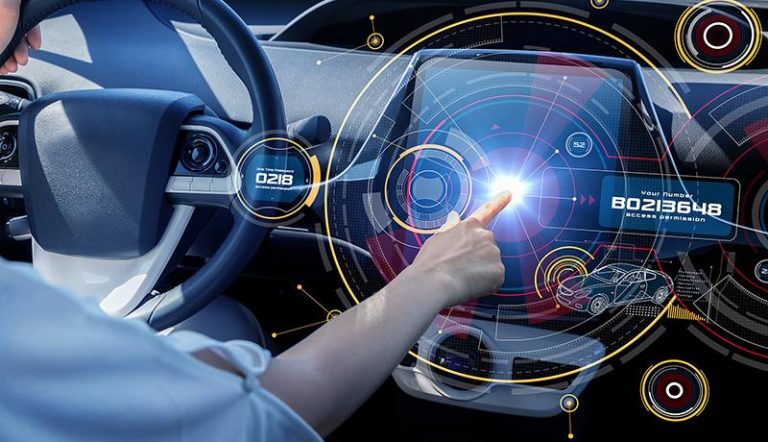
This article is written by Yasar Arafath who is pursuing a Diploma in Business Laws For In-House Counsels from LawSikho.
Table of Contents
Introduction
The automobile market in Indian is the fourth largest in the world, with an increasing scale of production by 9.5 per cent year on year. The automobile industry is one of the most vibrant sectors of the Indian economy with many of the global automotive giants now present in the market and promoting its growth.
Over the years, India has emerged as the 7th largest manufacturer of commercial vehicles and established a strong base for automobile manufacturing for itself. With 1991 economic reforms the foreign investments flooded into the Indian market as the FDI was permitted 100% in the Automobile Industry. Until then there were only few manufacturers in India and later many multinational automobile manufacturers started their operation in India which contributed for the growth of the automobile industry in India. Throughout the years, the Indian automobile industry has witnessed a competition between most reputable international automotive manufacturing companies for market share.
The government of India continues to drive growth in the automobile sector with the implementation of a completely liberalized foreign direct investment policy and providing incentives.
India is also a major automobile exporter with overall automotive exports rising at 15.54 per cent between April 2018 and February 2019. According to a report from the Society of Indian Automobile Manufacturers (SIAM), the maximum share in exports consist of passenger vehicles in this segment over the past few years.
Disputes
Land Acquisition
In the past decade, the automotive industry in India has witnessed disputes relating primarily to land acquisition for setting up manufacturing plants.
Land Acquisition Act 1894, solely regulated land acquisitions until early 2014. Although the Act permitted land acquisition by automotive companies, it became a platform for farmers to challenge the adequacy of compensation received from the automobile manufacturers and non-adherence of required process at the time of acquisition. This caused stalling of projects until the matter had been resolved by the courts or the companies reached a settlement out-of-court with the owners of the land.
In 2006, Tata Motors announced plans to set up an automotive factory in Singur, West Bengal for its small car manufacturing/project. Shortly after the announcement it faced protests from farmers against the proposal made by the state government to acquire 997 acres of farmland. Until 2008 the unrest continued to buy the farmers which forced Tata Motors to relocate its factory to Gujarat. the government of India has made continued efforts to bring about specific legislation that can ease the acquisition by the manufacturing industry.
Employment Issues
A unionized workforce or Trade Unions is common in the automobile Industry. Automotive manufacturers in India have witnessed labour unrest on many occasions due to a plethora of reasons varying from demand to increase in wages to demand to reinstate the terminated employees.
In 2012 one of such issues occurred at the manufacturing plant of Maruti Suzuki. Owing to miscommunication between the employees and management, demand for recognition of labour unions, demand for wage hikes and reinstatements of dismissed workers are the reasons that caused unrest among the workers.
Usually, several automobile companies adopt the practice of hiring labourers on contract to do almost every job in the plant and avoiding permanent employment, which provides minimum statutory benefits to the workers. Workers are growing conscious about this practice and hence, a large proportion of workers are unhappy with respect to the salary and benefits offered.
More lately, in March 2019, employees from Asahi India Glass Limited, went on strike against the suspension of employees, demanding an increase in wage and unlawful dismissal.
Over the years, it has been identified that the major reason for employment issues is due to lack of a proper communication channel between the employer and the employee, leading to poor management of employer-employee relationship.
There have been numerous cases brought before the judiciary involving unrest among workers owing to termination or suspension of employment of a worker that has been challenged as being unfair by the trade union or the employee.
Product safety and quality
The Motor Vehicles Act 1988 (MVA) read with the Central Motor Vehicles Rules 1989 (the CMV Rules) authorizes the government to notify, from time to time Safety, Performance Standards and Quality, component or assembly to be used by the automobile manufactures and the standards in relation to any part.
Every manufacturer is required to get approved the prototype of the part by the agency, components for which standards have been notified and referred to in rule 126 of the CMV Rules. Every manufacturer shall also certify compliance with the statutory form after obtaining approval as prescribed under the CMV Rules.
The Bharat Stage Emission Standards are emission standards that have been framed by the central government to regulate air pollutants from engine internal combustion equipment, including motor vehicles. Currently in India the vehicle emissions standards adapted are the Bharat Stage IV or BS-IV.
The Motor Vehicle Act prescribes punishment through fine in the event a person is found to be driving an automobile that violates the standards prescribed in relation to road safety and pollution.
In India there is no statutory regulation governing the recall of vehicles. Till date whatever recalls made by automotive manufacturers in India are on a voluntary basis. Motor Vehicle Amendment Bill 2017 proposed a statutory framework for recall of automobiles.
Due to the defect in an automobile if a customer suffers any loss, such customer has a remedy against the manufacturer or supplier of the automobile (as the case may be) under the Consumer Protection Act 1986, which is the legislation that protects rights of all the customers. Claims under the Consumer Protection Act 1986 can be made before various forums at the district, state and national level.
Intellectual property disputes
Innovation is the most important aspect of the automobile industry and thus, intellectual property is a key asset for automotive companies. Over the years, the automobile industry has witnessed significant disputes in intellectual property rights ranging from disputes on patents to industrial designs and copyrights.
The artistic look of an automobile is the best trade feature for any automobile company. Automobile leaders such as Hyundai, Mercedes, Honda, Maruti, Tata, Toyota and many more have already established their own brands with unique design. Design Act, 2000 protects industrial designs upon registration with the relevant authority.
The Trade Marks Act 1999 deals with registration of a trademark and filing of multiclass applications. Under this act the protection is granted for 10 years. Hence, it is important for the protection of trademarks in the automotive industry especially where an automobile is known by its marks and symbols. In India courts have provided a plethora of precedents wherein violation or infringement of the Trade Marks Act has been analyzed and developed law over the years through these precedents.
The Patent Act 1970 also plays a key role in the automobile industry. There will be new inventions of technology and technique which can be granted protection when registered under Patents Act with the concerned authority. The Copyright Act 1957 protects the software developed by automotive industries for further improvement of the functions of the automobiles by way of copyrights.
It is evident from the current scenario registration of intellectual property goes a long way and is extremely helpful to protect oneself against intellectual property theft.
Dispute Resolution Mechanism
In the last few years, the automobile industry has witnessed disputes majorly related to land acquisition for setting up manufacturing plants and issues related to employment.
Land Acquisition Act, 1894 solely regulated land acquisitions until early 2014. The Right to Fair Compensation and Transparency in Land Acquisition, Rehabilitation and Resettlement Act, 2013 was enacted in 2014 with the aim of making the process fairer and more transparent. The government further plans to propose new laws that can provide more benefits to the industries acquiring land.
Given the scale of the automotive industry, often the worker associations and trade unions are very strong and have the ability to influence other co-workers. Contract labour is one of the concerns for the automotive industry which set off unrest among workers, as they have been working as contract labourers for a longer time and haven’t been absorbed into the company as permanent employees. There are judicial judgements made by the courts which have come down heavily on industries for adopting such a practice.
Over the years, the automotive industry has experienced disputes with consumers in relation to quality control issues faced by the consumers during after-sales services or malfunction of the car on the roads.
Intellectual Property disputes can be resolved but the judgement may vary from case to case depending upon various factors such as available evidence, the defense of the opposing party, the ability of the adjudicating authority or officer, etc. Generally, trademark disputes are resolved much faster than disputes involving patents.
For faster solutions, automobile manufacturers have an option to seek interim injunctions from the courts, which are granted on a case-by-case basis after considering several factors and circumstances. In regard to labour issues, many automobile companies have been seen to engage in negotiations for settlement with workers and this has been a quick solution.
Conclusion
In India, automobile industry has grown faster post-liberalization period. Technological Innovations and organization restructuring put together local contents in global standards. The automobile industry has to follow specific regulations and policies that govern the design, research, technology, manufacturing, testing, import/ export, sale, use, repair, and recycling of automotive vehicles, components and services from falling into legal disputes. Arbitration gives the automobile industry more flexibility as a substantive law. It allows us to pick the applicable law and avoid the problem of adapting the agreement to each and every legal system and avoid the application of overly broad restrictions resulting from national law.
References
- https://auto.economictimes.indiatimes.com/news/industry/10-worst-labour-agitations-in-indian-auto-industry/51099922
- https://www.lexology.com/library/detail.aspx?g=3513facc-9d40-4815-bbd1-b1485feca8a3
- https://nishithdesai.com/information/areas-of-service/industry/automobile.html
- http://210.148.106.167/library/English/Publish/Download/Jrp/pdf/154_ch6.pdf
- https://www.natlawreview.com/article/top-legal-issues-facing-automotive-industry-2020
- https://www.lexology.com/library/detail.aspx?g=9b57831f-df56-4963-bc69-ebdc420c1154
- https://www.okbar.org/freelegalinfo/disputes/
LawSikho has created a telegram group for exchanging legal knowledge, referrals and various opportunities. You can click on this link and join:
 Serato DJ Crack 2025Serato DJ PRO Crack
Serato DJ Crack 2025Serato DJ PRO Crack




 Allow notifications
Allow notifications
